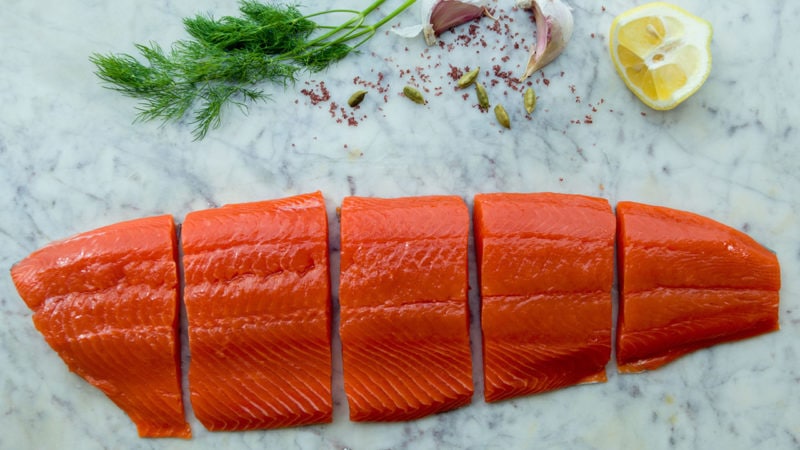Did you know salmon cooks up fast and delicious, straight from the freezer? Even better, learning the right techniques for how to cook frozen salmon is easy.
You might have a hard time picturing icy bricks of salmon turning into a warm, flaky fish dinner. Especially if you’re used to buying fresh salmon filets. But we promise it’s possible.
We’re sharing our favorite tips and a few simple tutorials on how to cook frozen salmon. You’ll learn how you can use your oven, air fryer, or Instant Pot to create wholesome salmon dinners straight from the freezer.
Keep reading for the full breakdown of how to cook frozen salmon perfectly.
1. Work with smaller cuts.
For the best results, use smaller frozen cuts of salmon (in the range of 6-ounce frozen fillets). While it’s totally possible to cook a whole side of salmon from frozen, there’s less margin for error.
It’s also true that cooking salmon from frozen will often yield less beautiful results, so we’d save our truly impressive cuts of fish for proper thawing and a special meal. Use our frozen salmon cooking techniques for nights when you forgot to take anything out and need dinner on the table, stat.
2. Don’t rinse the salmon.
You might read that you should rinse your frozen salmon under cool water to remove any ice crystals, but we’d skip this step, based on USDA final recommendations. If anything, it might leave your salmon a bit waterlogged.
3. Try a flavorful sauce for your salmon.
Salmon is an amazing blank canvas that takes well to so many flavor profiles, from a pesto sauce to a garlic brown sugar glaze. Use a quick sauce to amp up the flavor of your frozen salmon. We’ve included instructions for how you might do it with different cooking methods below.
BBQ salmon is a crowd favorite. A tangy barbecue-style sauce (like our Gochujang-Glazed Salmon) pairs nicely with this delicious fish and other fresh ingredients. Plus with a shorter cooking time, frozen salmon is a perfect dinner choice any night of the week.
4. Scrape off any unsightly bits.
If there is a trade-off to cooking salmon from frozen instead of fresh, it’s that it rarely turns out as pretty. You’ll likely encounter more bits of albumin, which is a white protein that’s found in all salmon and tends to ooze out with more aggressive cooking methods. This is perfectly safe; feel free to scrape it off. Plus as salmon thaws during the cooking process, it can start to fall apart. These flaky salmon pieces are delicious.
Still, cooking salmon from frozen can yield some truly delicious results. Serve it coated in a delicious sauce alongside fresh veggies, or perhaps flaked in some fried rice. We promise it’s just as good.
5. Here’s how you know frozen salmon is cooked.
If you’re new to cooking salmon, here are a few things you’ll see when it’s cooked through. The flesh will be opaque and no longer translucent. When pressed with a fork, the salmon will easily flake into small pieces. You might also see albumin.
Salmon is a bit like steak in that everyone has a different preference for doneness. Some chefs even leave it slightly translucent pink in the middle—or medium-rare.
In terms of doneness, the official FDA recommendation is an internal temperature of 145˚F as measured by a instant-read thermometer, which will be a very firm piece of fish.
The ButcherBox Kitchen Team works hard to give you confidence you need to pull off any kitchen endeavor.



